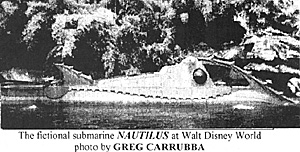The submarine has long held a fascinating grip on the human imagination. Silent, but quick to strike, it is one of the most popular naval craft and one that most people, even if they are not naval personnel, enjoy reading about.
Submarines go way back in history. Ancient records speak of Alexander the Great exploring the ocean floor in a submersible craft, though this may have been a primitive type of diving bell.
And during the American Revolutionary War, what may have been the first operational use of a submarine in 1776 took place when Sgt. Ezra Lee of the AMERICAN CONTINENTAL ARMY took a primitive craft, invented by David Bushnell of Connecticut and attacked the British SHIP OF THE LINE HMS EAGLE in New York Harbor. The attack failed. The American vessel was simply named - the TURTLE.
The American Civil War saw a successful submarine attack when in 1864 the CSS HUNLEY attacked and sank the USS HOUSATONIC. Unfortunately, the HUNLEY was also destroyed. Thus, to the CONFEDERATE NAVY go the honors of using this new weapon in a successful manner before anyone else.
 In the ITALIAN NAVY the early impetus for having submarines chiefly came from the determination of Giacinto Pullino, an Italian naval officer and engineer who was fascinated by naval vessels that could submerge, after reading of the exploits of the fictional NAUTILUS in Jules Verne’s famous novel ‘TWENTY THOUSAND LEAGUES UNDER THE SEA.’
In the ITALIAN NAVY the early impetus for having submarines chiefly came from the determination of Giacinto Pullino, an Italian naval officer and engineer who was fascinated by naval vessels that could submerge, after reading of the exploits of the fictional NAUTILUS in Jules Verne’s famous novel ‘TWENTY THOUSAND LEAGUES UNDER THE SEA.’
Pullino was born on January 24, 1837 in the town of Castellamonte in the far north of Italy, in the region of Piedmont. He entered the Piedmont Navy in 1860 as a Midshipman just one year before Italy unified. By 1863 he was able to obtain a commission as an Ensign and was assigned to the frigate CARLO ALBERTO. Several years after, he was posted to the great naval base and shipyard at Livorno where he was put in charge of the shipbuilding ways and supervised the work for warships that were being built.
By 1880, Pullino became the chief of the technical office where he supervised the construction of the battleship LEPANTO whose main armament consisted of four 17” guns. At that time, these were the largest naval guns in the world and were not superseded until the 18” guns of the Japanese battleship YAMATO entered service in 1941.
The 17” guns of the LEPANTO and her sister-ship ITALIA made these the world’s most powerful warships until the advent of the British HMS DREADNOUGHT in 1906.
Back to KTB #109 Table of Contents
Back to KTB List of Issues
Back to MagWeb Master Magazine List
© Copyright 1995 by Harry Cooper, Sharkhunters International, Inc.
This article appears in MagWeb (Magazine Web) on the Internet World Wide Web. Other military history articles articles are available at http://www.magweb.com
Join Sharkhunters International, Inc.: PO Box 1539, Hernando, FL 34442, ph: 352-637-2917, fax: 352-637-6289, www.sharkhunters.com
